
Parental controls are features which may be included in digital television services, computers and video games, mobile devices and software that allow parents to restrict the access of content to their children. These controls were created to assist parents in their ability to restrict certain content viewable by their children. This may be content they deem inappropriate for their age, maturity level or feel is aimed more at an adult audience. Parental controls fall into roughly four categories: content filters, which limit access to age inappropriate content; usage controls, which constrain the usage of these devices such as placing time-limits on usage or forbidding certain types of usage; computer usage management tools, which enforces the use of certain software; and monitoring, which can track location and activity when using the devices.
Microsoft family features is a free set of features available on Windows 10 PC and Mobile that is bundled with the Windows 10, Home edition operating system. On July 17, 2020, Microsoft released Microsoft Family Safety on Google Play and App Store (iOS) as well. Starting in Windows 10, a Microsoft Account is required to use the Microsoft family features. A parent can manage settings for a child if both of their Microsoft Accounts are in the same family. When parents turn on settings for their child, these settings are applied to every device that the child logs into with that Microsoft Account.
Android is a mobile operating system based on a modified version of the Linux kernel and other open-source software, designed primarily for touchscreen mobile devices such as smartphones and tablets. Android is developed by a consortium of developers known as the Open Handset Alliance, though its most widely used version is primarily developed by Google. It was unveiled in November 2007, with the first commercial Android device, the HTC Dream, being launched in September 2008.
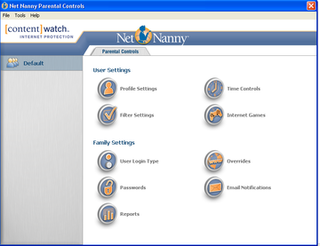
Net Nanny is a content-control software suite marketed primarily towards parents as a way to monitor and control their child's computer and phone activity.

Android Ice Cream Sandwich is the fourth major version of the Android mobile operating system developed by Google. Unveiled on October 19, 2011, Android 4.0 builds upon the significant changes made by the tablet-only release Android Honeycomb, in an effort to create a unified platform for both smartphones and tablets. The first phone with Android Ice Cream Sandwich was Samsung Galaxy Nexus.
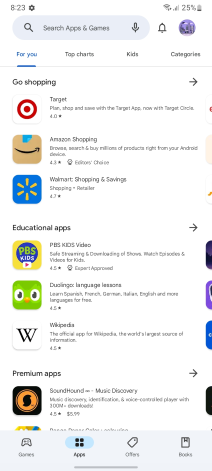
Google Play, also known as the Google Play Store or Play Store and formerly Android Market, is a digital distribution service operated and developed by Google. It serves as the official app store for certified devices running on the Android operating system and its derivatives, as well as ChromeOS, allowing users to browse and download applications developed with the Android software development kit (SDK) and published through Google. Google Play has also served as a digital media store, offering games, music, books, movies, and television programs. Content that has been purchased on Google Play Movies & TV and Google Play Books can be accessed on a web browser and through the Android and iOS apps.
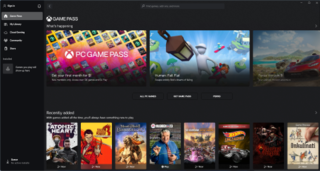
The Xbox app is an app for Windows 8, Windows 10, Windows 11, Android, iOS and Tizen. It acts as a companion app for Xbox video game consoles, providing access to Xbox network community features, remote control, as well as second screen functionality with selected games, applications, and content.

Facebook Home was a user interface layer for Android smartphones. Developed by the company then known as Facebook, the software was designed to be a drop-in replacement for the device's existing home screen ("launcher"). It provided a replacement home screen that allowed users to easily view and post content on Facebook along with launching apps, a replacement lock screen that displayed notifications from Facebook and other apps, and an overlay which allowed users to chat via Facebook messages or SMS from any app. Facebook Home was unveiled at a press event on April 4, 2013, and was released on April 12, 2013 for a limited selection of devices from HTC and Samsung Electronics—including the HTC First, a new smartphone pre-loaded with the software. Facebook is no longer supporting or providing updates for Facebook Home.

Chromecast is a line of digital media players developed by Google. The devices, designed as small dongles, can play Internet-streamed audio-visual content on a high-definition television or home audio system. The user can control playback with a mobile device or personal computer through mobile and web apps that can use the Google Cast protocol, or by issuing commands via Google Assistant; later models introduced an interactive user interface and remote control. Content can be mirrored to video models from the Google Chrome web browser on a personal computer or from the screen of some Android devices.
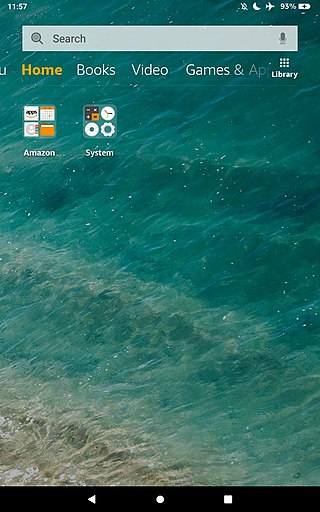
Fire OS is a mobile operating system based on the Android Open Source Project (AOSP). It is developed by Amazon for their devices. Fire OS includes proprietary software, a customized user interface primarily centered on content consumption, and heavy ties to content available from Amazon's storefronts and services.
Google Play Services is a proprietary software package produced by Google for installation on Android devices. It consists of background services and libraries for use by mobile apps running on the device. When it was introduced in 2012, it provided access to the Google+ APIs and OAuth 2.0. It expanded to cover a variety of Google services, allowing applications to communicate with the services through common means.
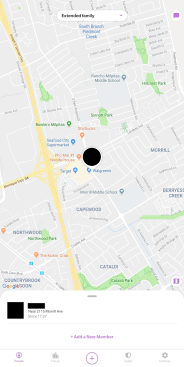
Life360 Inc. is a San Francisco, California–based American information technology company that provides location-based services, including sharing and notifications, to consumers globally. Its main service is called Life360, a family social networking app released in 2008. It is a location-based service designed primarily to enable friends and family members to share their location with each other.
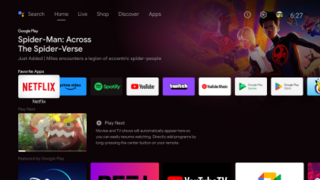
Android TV is a smart TV operating system based on Android and developed by Google. It is available on television sets, soundbars, set-top boxes and digital media players. A successor to Google TV, it features a user interface designed around content discovery and voice search, content aggregation from various media apps and services, and integration with other recent Google technologies such as Assistant, Cast, and Knowledge Graph.

Android Auto is a mobile app developed by Google to mirror features of an Android device, such as a smartphone, on a car's dashboard information and entertainment head unit.

Google Cardboard is a discontinued virtual reality (VR) platform developed by Google. Named for its fold-out cardboard viewer into which a smartphone is inserted, the platform was intended as a low-cost system to encourage interest and development in VR applications. Users can either build their own viewer from simple, low-cost components using specifications published by Google, or purchase a pre-manufactured one. To use the platform, users run Cardboard-compatible mobile apps on their phone, place it into the back of the viewer, and view content through the lenses.
The Nexus Player was a digital media player co-developed by Google, Intel and Asus. It was the second media player in the Google Nexus family of consumer devices. Originally running the Android 5.0 ("Lollipop") operating system, it was the first device to employ the Android TV platform. The Nexus player supports Google Cast, the feature for selecting and controlling media playback on a television that was first introduced by Chromecast. Sales of the Nexus Player were discontinued in May 2016, and product support ended in March 2018.

The LeapFrog Epic is an Android-based mini-tablet computer produced and marketed by LeapFrog Enterprises. Released in 2015, the Epic is LeapFrog's first device to run on Android; most of LeapFrog's mobile computing devices for children run on a customized Ångström Linux distribution.

YouTube Kids is a video app and website for children developed by YouTube, a subsidiary of Google. The app provides a version of the service oriented solely towards children, with curated selections of content, parental control features, and filtering of videos deemed inappropriate for viewing by children under the age of 13, in accordance with the Children's Online Privacy Protection Act, which prohibits the regular YouTube app from profiling children under the age of 13 for advertising purposes.
Spotify Kids is a mobile app that allows children to browse Spotify while providing their parents with parental controls. The app also includes curated content for children such as audiobooks, lullabies, and bedtime stories. Only subscribers to Spotify's Premium Family subscription plan can access the app, which has been described as a method of boosting subscriptions to the plan.
















